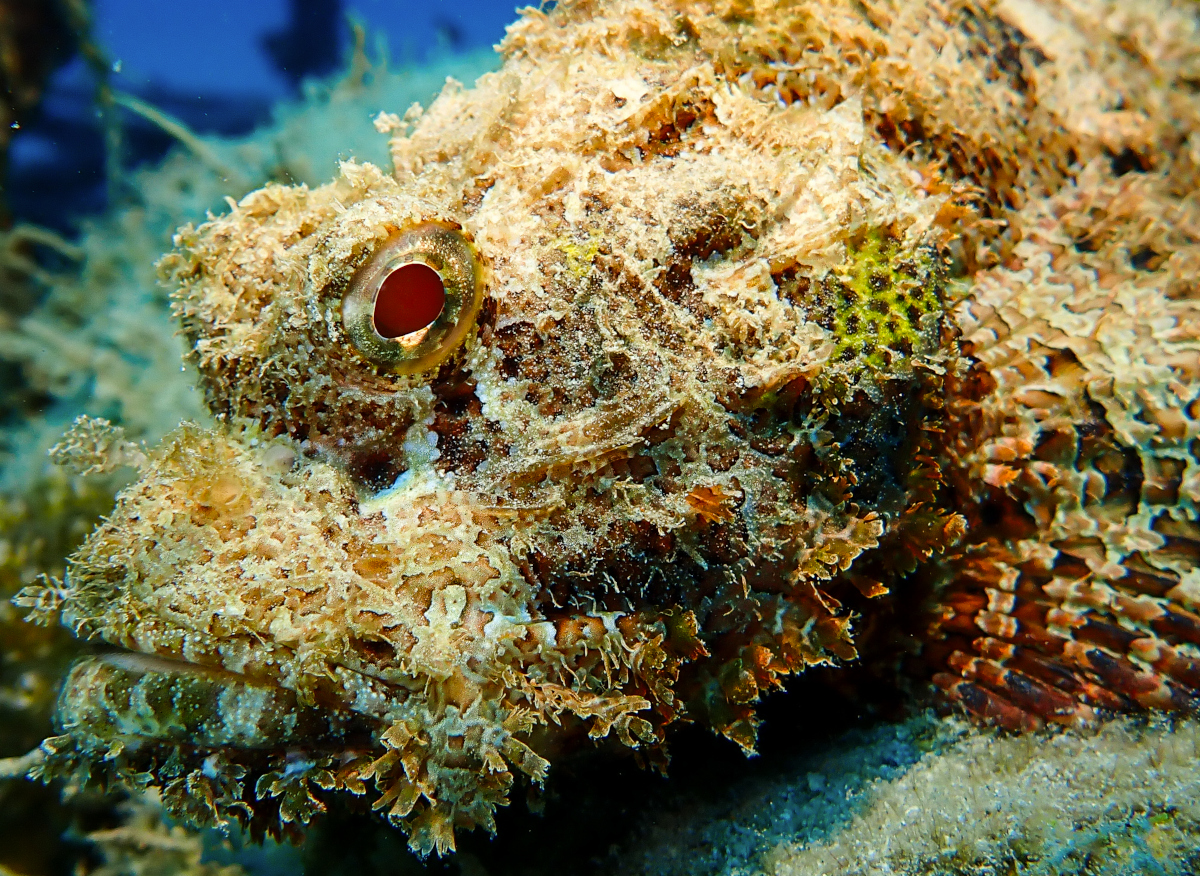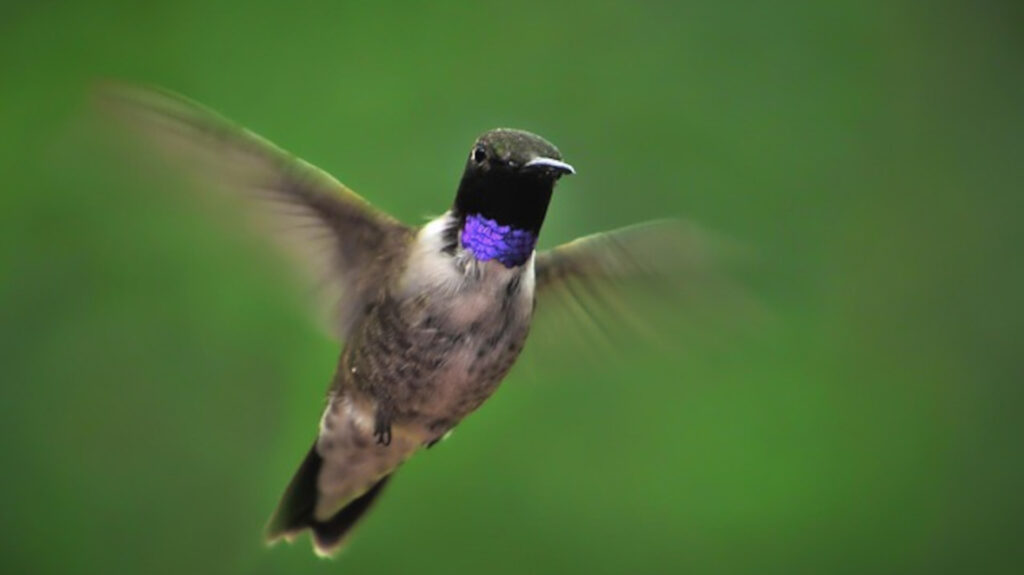Now Reading: Scorpionfish: A Masterclass in Camouflage
-
01
Scorpionfish: A Masterclass in Camouflage
Scorpionfish: A Masterclass in Camouflage

In the colorful chaos of coral reefs and rocky seabeds, where movement and brightness often signal life, the scorpionfish has mastered a different art: invisibility. These cryptic predators are among the most camouflaged creatures in the ocean, perfectly mimicking rocks, coral, and debris. Their ability to disappear into their surroundings isn’t just a curious adaptation—it’s a vital strategy for both hunting and survival.
The scorpionfish’s camouflage begins with its coloration. Their mottled bodies are painted in shades of brown, red, gray, and green, often speckled with spots or blotches that break up their outline. This natural palette allows them to blend seamlessly with sand, stones, or reef surfaces. Some even adjust their skin tone slightly to better match the surrounding habitat, a subtle but effective edge.
But camouflage in scorpionfish goes beyond color. Their bodies are covered with fleshy appendages, skin flaps, and rough textures that resemble algae or coral polyps. These irregular features disrupt their silhouette, making it harder for other animals to detect them. Unlike sleek predators like sharks, scorpionfish benefit from a disordered appearance, which better mimics the natural clutter of the ocean floor.
Equally important is their behavior. Scorpionfish remain perfectly motionless for long stretches of time, often lying partially buried in sand or tucked into reef crevices. Movement is a giveaway in the wild, so this stillness helps complete their disguise. To a passing fish or diver, they might appear as just another piece of the reef.
This camouflage isn’t just about avoiding detection—it’s also a tool for hunting. Scorpionfish are ambush predators, meaning they don’t chase their prey. Instead, they wait patiently until a smaller fish, shrimp, or crustacean ventures too close. In a flash, they lunge forward and engulf the prey in one of the fastest strikes in the animal kingdom, often catching it before it even realizes what happened.
Being well-camouflaged also protects scorpionfish from predators. Although they are armed with venomous spines that make them a dangerous meal, not being seen in the first place is their best defense. Large fish, sea birds, and even humans can pose a threat, so remaining invisible is their first line of survival.
Different species of scorpionfish adapt their camouflage to different environments. Some blend into coral rubble, while others mimic seagrass or sandy bottoms. The tasseled scorpionfish, for example, is covered in ornate frills and projections that look just like bits of seaweed or sponge, giving it an uncanny resemblance to its habitat.
Interestingly, their camouflage can be so effective that even divers and researchers often overlook them. Many scorpionfish are spotted only after someone nearly touches or steps on them, highlighting just how indistinguishable they can be from their surroundings. This stealthy disguise also means their movements through an area often go unnoticed, adding to their mystique.
While camouflage offers incredible advantages, it also has limits. Scorpionfish are vulnerable during moments of movement—when they relocate, hunt, or defend territory. During these times, they rely more on their venomous defenses and rapid escape responses. Still, once they settle back into place, their invisibility resumes, and they seem to melt into the reef once again.
Camouflage plays a crucial role throughout the life stages of the scorpionfish, from juveniles to adults. Young scorpionfish are particularly vulnerable to predation, and their survival heavily depends on their ability to remain unseen. Many juvenile scorpionfish exhibit even more exaggerated skin flaps and mottled patterns than adults, enhancing their ability to hide in coral rubble or seaweed beds. As they grow, their camouflage evolves to match their changing habitats, ensuring that their defenses mature alongside them.
This ability to vanish into the environment also affects interactions within the reef ecosystem. Scorpionfish are not just predators—they’re also competitors. By remaining hidden, they avoid unnecessary confrontations with other reef dwellers, including rival predators and territorial species. Their stealthy nature allows them to occupy ecological niches that more conspicuous animals cannot, helping to maintain the delicate balance of species diversity in coral reef systems.
Despite their fearsome defenses, scorpionfish are not aggressive. Most stings occur when people accidentally touch or step on them while snorkeling, diving, or wading through shallow reef areas. Wearing reef-safe footwear and being cautious around rocks and coral can help reduce the risk of accidental encounters.
Among its relatives are some equally fascinating and notorious fish. The lionfish, for example, is a flamboyant cousin of the scorpionfish and has become invasive in the Atlantic. The reef stonefish, another close relative, is considered the most venomous fish in the world. All of these belong to the broader scorpionfish suborder (Scorpaenoidei), showcasing the family’s diversity and specialization.
Scorpionfish are found across the Indo-Pacific, Atlantic, and Red Sea regions, often inhabiting coral reefs, rocky seabeds, and sandy bottoms. Their sedentary lifestyle and camouflage mean they are often overlooked, even by experienced divers.
Some notable members of the family include:
- The Reef Stonefish (Synanceia verrucosa): Arguably the most venomous fish in the world, it belongs to the same suborder (Scorpaenoidei) as scorpionfish.
- The Lionfish (Pterois spp.): A more flamboyant and invasive cousin, known for its striking fins and painful sting.
- The Tassled Scorpionfish (Scorpaenopsis oxycephala): A master of disguise, often found in coral crevices and rubble.





























